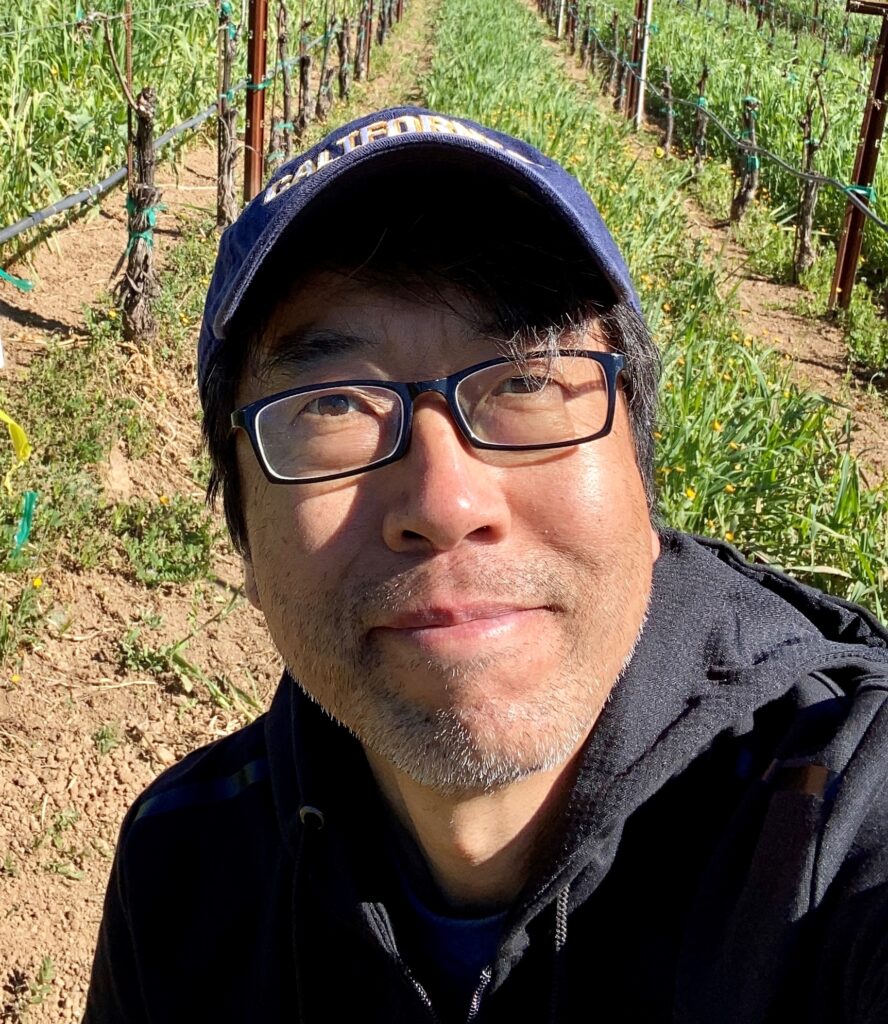
Junghoon Lee grew up in Seoul, South Korea. He planned to go to technical school after graduation so that he could learn how to design mechanical devices that people would enjoy using, but one of his teachers encouraged him to instead go to a university. He ultimately earned a PhD in Mechanical Engineering from UCLA and became a professor. But his childhood dream of creating practical tools finally won out and he launched Telofarm in 2017. It’s based on an “Internet of Plants” (IoP) which allows them to talk to their farmers. Telofarm’s technology measures grapevine stress, sap flow and responses to increased water levels, fertilizers, hedging and the onset of dormancy. Here’s his story.
Please tell us about your family, where you grew up, and where you spend most of your time. Growing up, was your family’s livelihood based on farming, technology or some other business?
I was born and raised in Seoul. I completed my education at Seoul National University, specializing in mechanical engineering. Truth be told, my original aspiration was to attend a vocational school and train as a technician who designs practical machines for people’s enjoyment. However, my academic performance was exceptional, nearly topping the entire school, which led my teacher to strongly encourage me to pursue a university education. Sometimes, I find myself contemplating how different my life might have been had I chosen the vocational school path. My initial journey had nothing to do with farming.
Your given name, Junghoon, is a popular name for a boy in South Korea, and there are several famous Korean athletes and actors who also have that name. Can you tell us what it means and why your parents gave you that name?
Typically, Korean names consist of three Chinese characters, each with its distinct meaning. My family name, “Lee,” is a common one in Korea. As for my first name, “Jung Hoon,” it signifies “government” (Jung) and “contribution” (Hoon). Perhaps my grandfather, who bestowed this name upon me, had the intention that I would contribute to the public in the future.
You earned your PhD in Mechanical Engineering at UCLA and have taught that, plus Aerospace Engineering, Micro-Electro-Mechanical Systems, and Bioengineering, and were subsequently awarded “Best Teacher” at both Seoul National University and Northwestern in the same year! What made you decide to leave academia?
I’ve been in the teaching profession for 24 years now, ever since I graduated from UCLA. I spent four years teaching in Chicago, and the subsequent 20 years in Seoul. However, I’ve made the decision to step away from academia before reaching the mandatory retirement age of 65 in Korea. My choice stems from a deep desire to create tangible products that bring joy to people’s lives and to leave a lasting legacy through such innovations.
While working as a university professor, there are opportunities to contribute to the community by producing scholarly papers and filing valuable patents. However, I’ve come to realize that when it comes to turning innovative ideas into practical businesses, the confines of academia can be limiting. I yearn to pursue the dreams I held as a teenager before the window of opportunity closes with age. So, here I am now, bidding farewell to the academic world and taking the helm of my own venture, Telofarm, Inc.

You launched Telofarm in 2017. Tell us why you started the business and how you raised the capital to be able to do it. How many employees do you have?
During my Ph.D. studies, my focus was on a technology known as MEMS (Micro Electro-Mechanical Systems), which is utilized to create miniature machines. These machines are so incredibly small that their internal components are not even visible to the naked eye. The concept of MEMS was first pioneered at MIT and Berkeley in the mid-1970s; today it has evolved into a multi-billion-dollar industry. You may not realize it, but there are numerous MEMS-based miniaturized sensors and devices integrated into your mobile phone.
I came to understand that we could bring about a revolution in “data” innovation by introducing MEMS technology to the field of AgTech (agricultural technology). Our flagship product is the MEMS micro sap flow sensor, which boasts unprecedented performance compared to previous approaches. These tiny pin-like devices enable us to monitor the biological responses of plants, opening entirely new possibilities in the AgTech data sector. This is the driving force behind the inception of our business. We have secured series A investments and currently employ a team of 12 dedicated individuals.
Telofarm cleverly created a new platform called the “Internet of Plants” (IoP). Your website claims that “Plants have been speaking, now we can listen.” What does that mean for a grape grower?
Plants, as I’ve learned from experienced farmers, have a way of communicating with us. When these farmers venture out into their fields, they engage in a unique dialogue with their crops. The plants convey their well-being through various visual cues, such as color, shape, and subtle movements. I find that grape growers, in particular, can attest to this phenomenon. However, when a grower attempts to pass on this profound knowledge to their offspring, it can be challenging, as it often requires years of hands-on experience and the utilization of all five, if not six, senses.
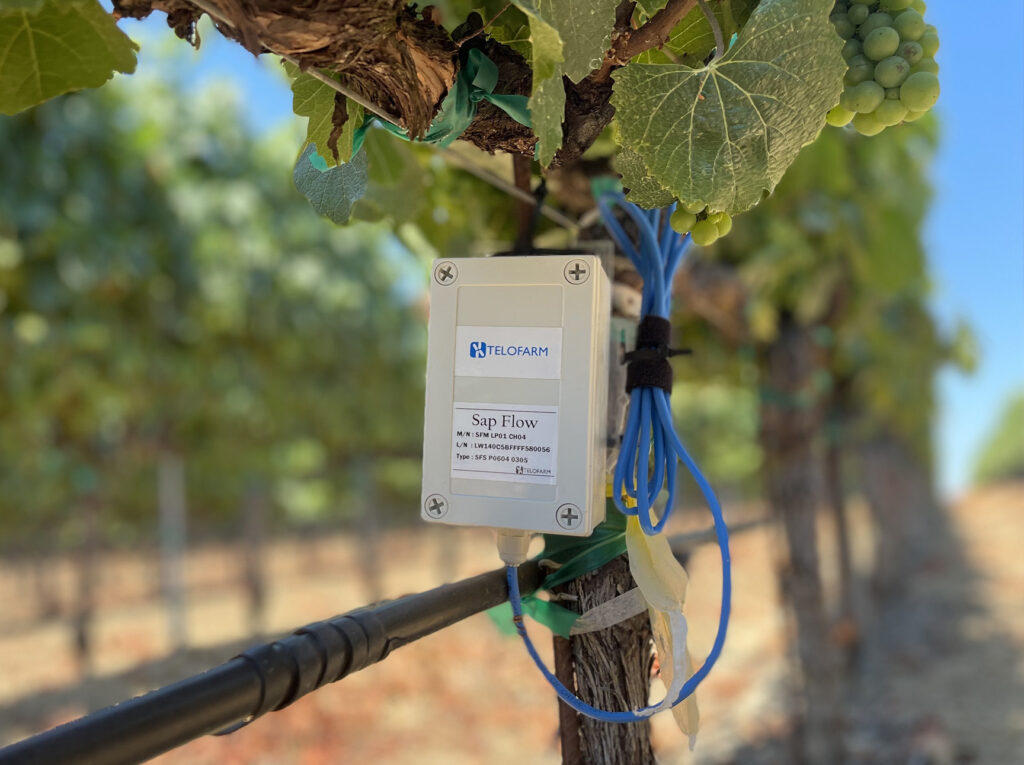
This is precisely where IoP comes into play. It endeavors to collect and interpret plant responses in a manner that can be quantified and conveyed through meaningful insights. We achieve this by measuring the sap flow rate, which serves as a representation of a plant’s water consumption rate and its unique patterns. All the plant’s reactions to factors like soil moisture and weather conditions are encapsulated within these sap flow signals. At times, we’ve discovered that these signals bear an uncanny resemblance to a person’s EKG (Electrocardiogram). We decipher these distinct “fingerprints” and provide farmers with a clear understanding of how their crops are faring in the field. Now, a farmer can easily explain what IoP is revealing – simply ask – “What is IoP telling you?”
You’ve worked with a few different vineyards in Northern California, including Fogline and Cline in the Petaluma Gap, as well as growers and producers up in Mendocino County. Can you tell us what you’ve done for them? Have you worked with an AVA group before to populate your technology in a new growing region?
We deployed our microsensors, soil sensors, and weather stations in various vineyards, using LoRa gateways to collect data, which was then stored in the cloud for further analysis. Our primary focus has been on extracting insights that revolve mainly around irrigation recommendations to ensure that vine stress remains within the prescribed limits. In addition to this crucial information, our system can provide various other valuable data, including frost warnings, initial water level rises, significant sap flow commencement, responses following hedging, effects of fertilizers, optimal harvest timing, and dormancy detection. While we haven’t provided all of these indications yet, it is entirely feasible to do so, even now, utilizing our historical data.
Our proof-of-concept trial was extensive; we deployed over 1500 sensors across 26 different sites in Northern California, including vineyards in the Petaluma Gap region. Can you imagine, in just one year, we managed to install 1500 sap flow sensors in California?
I am eager to collaborate with professional associations like the Petaluma Gap Winegrowers moving forward and am in search of dedicated vineyards whose owners are genuinely interested in our feedback, the development of more professional services, and have open doors to commercial applications. Of course, we also intend to work more closely with the 26 vineyards that we currently serve. I hope to share the valuable results we achieved in 2023 with your members in the near future.
A few years ago, you were given the top award for a startup at the US – Korea Conference on Science, Technology and Entrepreneurship. Was that for launching Telofarm? Tell us about the conference and the award.
I’ve had the privilege of receiving several prominent awards on behalf of Telofarm. Among these accolades, one of the most notable was the 2018 Innovation Agriculture Award, presented at the Abu Dhabi Sustainability Week by the UAE Ministry of Climate Change and Environment.
The US-Korea Scientist Association, an organization comprising top-tier Korean-American scientists and engineers, holds an annual conference in major cities across the United States. This conference includes a special segment dedicated to a startup pitching contest. In 2019, I was honored to receive the top award at this event, further recognizing the innovative contributions of Telofarm.
We understand that you are launching a new initiative with the robotics team and Hyundai. Can you share anything about it with our readers?
Hyundai, known for its automobiles, has acquired Boston Dynamics, renowned for its four-legged walking robots. Hyundai is now advancing the development of four-wheeled mobile platforms that surpass their predecessors. These innovative platforms demonstrate impressive capabilities, such as navigating stairs without spilling wine glasses artfully stacked on their platforms. Hyundai has successfully integrated these mobile platforms and their own robots into factory assembly lines. Their ambitions extend to agricultural applications, which immediately struck me as a game-changer for vineyard management.
In 2023, we amassed a vast amount of data in Northern California. To validate the insights we gleaned, we often had to dispatch our staff to the fields to capture photos that would align with our analyses. This task, although routine, presented challenges due to the expansive areas and limited workforce. This is precisely where mobile robots excel; they can traverse rows and blocks, continuously capturing images and collecting samples as required. Hyundai’s robots are ideally suited for these tasks, intelligently programmed with deep learning capabilities to navigate complex terrains, evade obstacles, and autonomously guide themselves to their targets. These robots can work tirelessly, transmitting data to our server, which then correlates it with our IoP signals. With this technology, we can offer the expertise of the finest viticulturists, covering vast areas swiftly and consistently. We’ll be able to pinpoint precise schedules for crop-related activities, including optimal harvest timing, and use this data to efficiently allocate our workforce for all farm operations leading up to the harvest. We are open to discussions with any vineyard owner in the Petaluma Gap who shares an interest in our innovative approach.
From your work in the Petaluma Gap, you know that the wind is a factor in creating the taste profile of our wines. The wind changes the grapevine physiology by creating thicker skins, keeping berry size small, and allowing for longer hang-time. Your platform measures wind speed and many other factors, but is there a way for it to be used on the sensory side of the equation?
It’s indeed fascinating to witness the beautiful effects of the wind in the Petaluma Gap region. We systematically gather wind data, allowing us to establish connections with the responses exhibited by the vines and, ultimately, the quality of the harvest. Our robots are capable of venturing into the fields, carefully monitoring the leaves and berries. Equipped with the knowledge imparted by leading viticulturists, our AI engine can make crucial harvesting decisions with a remarkably localized focus. Furthermore, the robots can even collect samples and conduct tests, contributing to the determination of the optimal harvest schedule. This blend of technology and viticultural expertise holds the promise of enhancing the quality of vineyard management and grape harvesting in ways that were previously unimaginable.
Is wine often served with dinner at your home? Or are you a beer or spirits fan?
In Korea the wine market is growing rapidly. Nowadays whatever cuisine it is, wine at the dinner table is a routine.
You travel a lot. As we begin this interview, you’re on a flight to Dubai. Tell us about what has taken you to some of these far-away places. Do you have any stories to tell about any particularly exciting or harrowing travels?
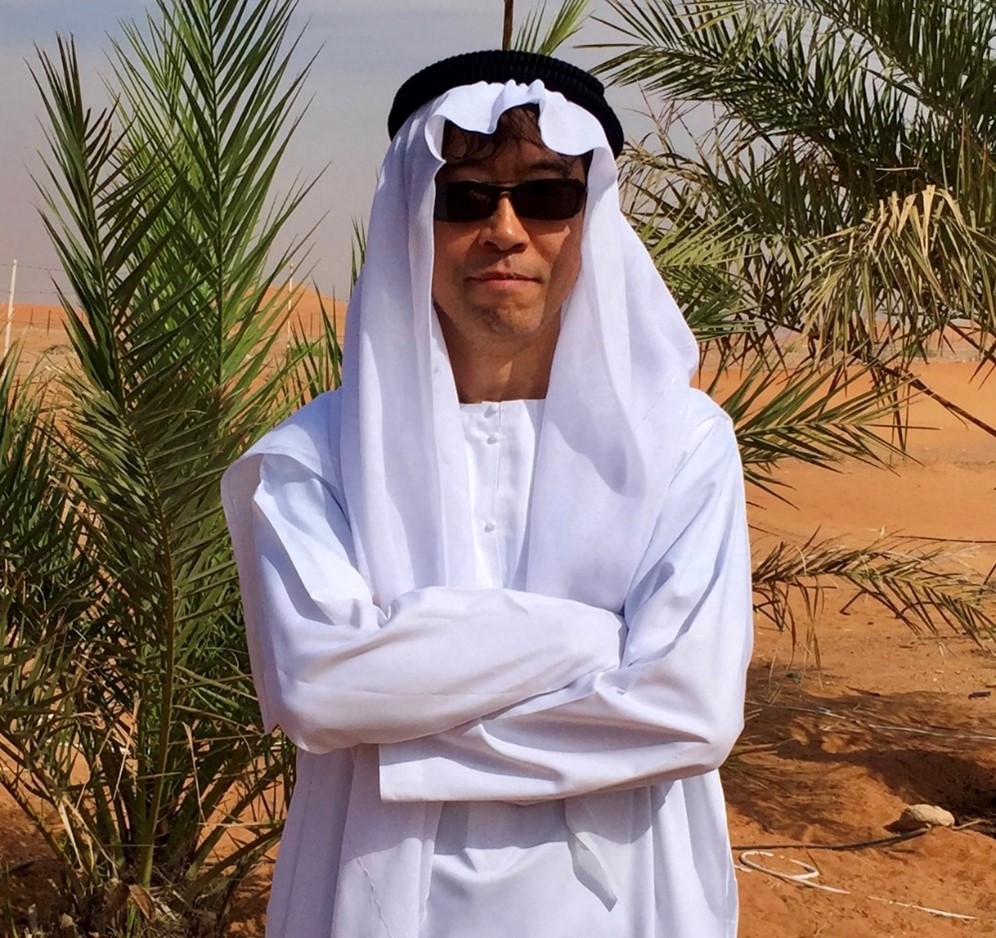
I used to be a frequent traveler worldwide before the pandemic struck. Dubai and Abu Dhabi hold a special place in my heart due to the precious award I received there, and I’ve cultivated many friends in that region. In fact, I’m in the process of forming a joint venture there. The Middle East is a truly captivating place, with its stunning dunes and oases. Despite the challenges of growing crops in the desert, the region has shown remarkable resilience in securing food production capabilities. I’m drawn to their innovative approach and their determination to overcome these challenges sustainably, with a strong emphasis on data-driven solutions.
What’s particularly exciting to me is the potential for these learnings to contribute to the future of humanity, including our endeavors beyond Earth. Plant-centered agriculture holds the key, in my view, if we want to explore and colonize other planets, such as Mars. Telofarm possesses the technology and expertise that can play a pivotal role in these ambitious multiplanetary ventures, and I’m enthusiastic about being a part of this visionary journey.
Have you launched Telofarm technology in other parts of the winegrowing world – Europe, Australia, South America, South Africa? If not, do you plan to?
Yes, I am currently in the process of setting up Telofarm Middle East. Additionally, we are in the early stages of exploring the possibility of establishing a branch office in New Zealand. My future plans include expanding our presence to Europe, South America, and Africa as part of our strategic growth initiatives.
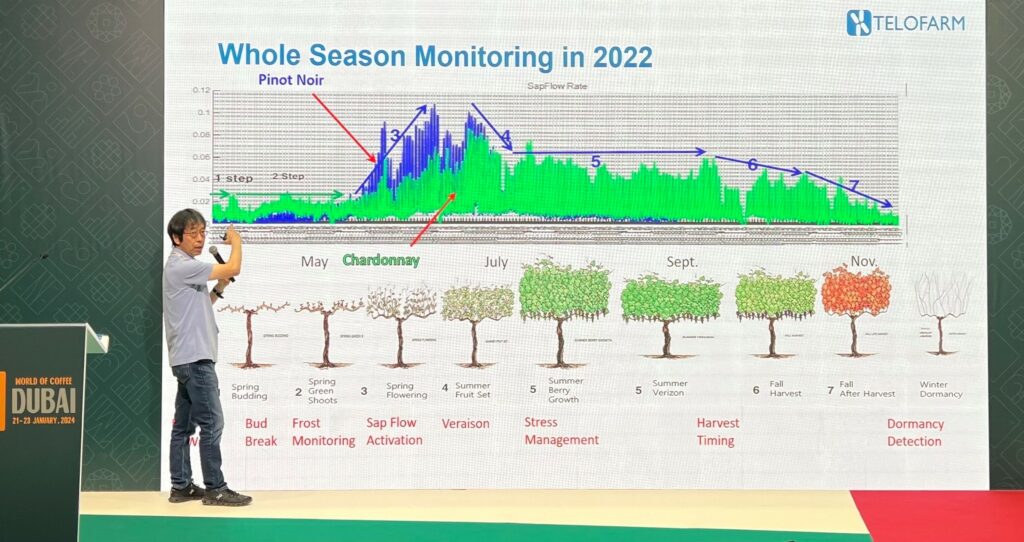
Now, having established your profession and company, do you have your own family (or do you even have time to have a family)?
I am married with two boys. I am planning to travel a lot with my wife.
Thinking ahead as an entrepreneur, what’s next after Telofarm?
I wholeheartedly share Elon Musk’s vision of humans becoming a multiplanetary species by migrating beyond Earth. It’s akin to the pioneering spirit that drove the expansion into California some time ago. However, colonizing other planets will bring even more profound changes to our way of life. We’ll need to establish genuinely sustainable methods of existence.
At Telofarm, we dream of achieving a fully recyclable food, energy, and water nexus for space colonies. This endeavor represents a crucial step towards ensuring the long-term sustainability and survival of humanity beyond our home planet. I believe that we will realize this dream before my retirement.
